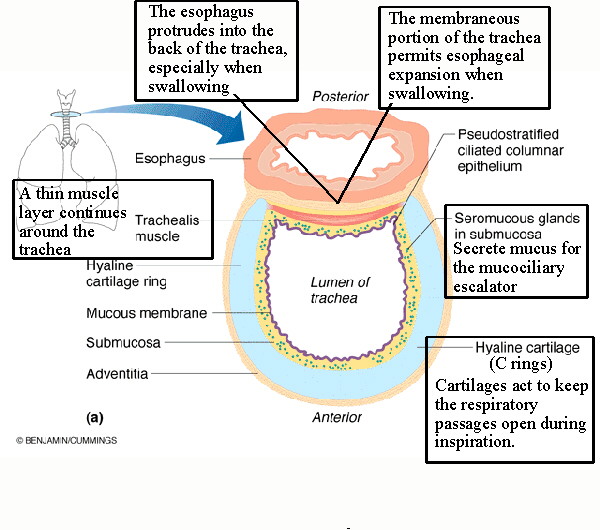

The ciliated cells of the nasal mucosa create a gentle current that moves the sheet of contaminated mucus posteriorly toward the throat, where it is swallowed and digested by stomach juices. Mucus. In addition, the sticky mucus produced by the mucosa’s glands moistens the air and traps incoming bacteria and other foreign debris, and lysozyme enzymes in the mucus destroy bacteria chemically.The rest of the mucosal lining, the nasal cavity called the respiratory mucosa, rests on a rich network of thin-walled veins that warms the air as it flows past.

The olfactory receptors for the sense of smell are located in the mucosa in the slitlike superior part of the nasal cavity, just beneath the ethmoid bone. The interior of the nose consists of the nasal cavity, divided by a midline nasal septum. Nostrils. During breathing, air enters the nose by passing through the nostrils, or nares.The nose is the only externally visible part of the respiratory system. The organs of the respiratory system include the nose, pharynx, larynx, trachea, bronchi, and their smaller branches, and the lungs, which contain the alveoli. Humidifier. Purify, humidify, and warm incoming air.Passageway. Passageways that allow air to reach the lungs.Gas exchange. The respiratory system organs oversee the gas exchanges that occur between the blood and the external environment.Elimination. Elimination of carbon dioxide.Oxygen supplier. The job of the respiratory system is to keep the body constantly supplied with oxygen.The functions of the respiratory system are: Age-Related Physiological Changes in the Respiratory System.External Respiration, Gas Transport, and Internal Respiration.We cannot “do without oxygen” for even a little while, as we can without food or water. The trillions of cells in the body require an abundant and continuous supply of oxygen to carry out their vital functions.


 0 kommentar(er)
0 kommentar(er)
